How the geology on our doorstep can help inform offshore infrastructure design
BGS is part of a new collaboration using onshore field work to contextualise offshore data and update baseline geological models which can inform the sustainable use of marine resources.
19/11/2025 By BGS Press
In 2023, BGS entered into a data-sharing partnership with Ossian to enhance understanding of the seabed and shallow subsurface conditions across the United Kingdom continental shelf . The partnership granted BGS access to Ossian’s extensive survey data, with the development set to become one of the world’s largest floating wind farms.
In total the lease area covers 858 km² and is located 84 km off Scotland’s east coast. Once glaciated and now submerged at approximately 72 m depth, the site offers a unique opportunity to investigate offshore stratigraphy and geomorphology in a region undergoing rapid environmental and industrial transformation. It also allows researchers to compare findings to Ossian’s parent company SSE Renewables’ other projects in the Firth of Forth: Berwick Bank and Seagreen.
As part of the project, BGS scientists hosted a dedicated workshop attended by members of the Ossian project team, which included a mini-field trip day in Midlothian close to the BGS office in Edinburgh. The field trip allowed the project teams to explore similarities to geological features found onshore and discuss the broader implications for interpreting offshore survey data. By examining glacial deposits, meltwater channels and till sequences in a terrestrial setting, geoscientists can refine offshore geological models and reduce uncertainty in infrastructure design.

Members of the BGS and Ossian project teams at Carlops during the field trip. The site visit provided an opportunity to discuss glacial geomorphology in the field and explore how onshore analogues can inform offshore interpretations and infrastructure planning. BGS © UKRI.
A key example observed during the field trip was the heterogeneity of the sediments across relatively small areas, with notable variations in grain size, composition and depositional structure. These complexities mirror the variability of ground conditions found offshore and highlight the importance of detailed site characterisation when planning and constructing marine infrastructure.
To help contextualise the offshore data, the field trip explored several key geological sites in Midlothian, each offering valuable insights into glacial processes and sedimentary environments similar to those observed beneath the sea.
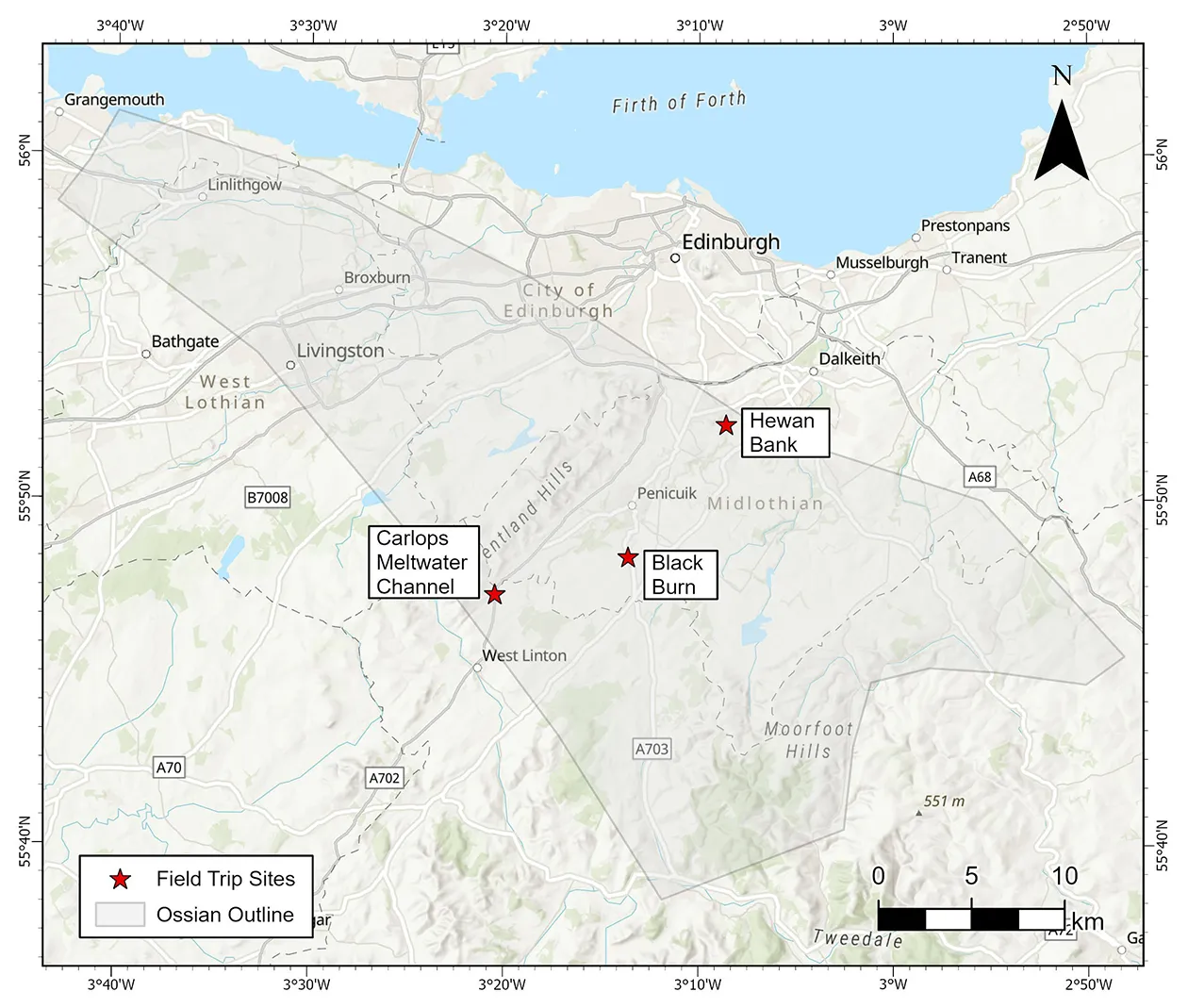
Locations of field trip sites visited during the BGS/Ossian field day in Midlothian. The three sites, Carlops meltwater channel, Black Burn and Hewan Bank, are all featured on the Scottish Geology Trust website. The outline of the Ossian offshore wind farm lease area is overlaid to illustrate the scale of the offshore development relative to the onshore sites. This visual comparison helps contextualise how small-scale geological variability observed onshore can inform interpretations of much larger offshore environments. Base map © OpenStreetMap. BGS © UKRI.
Auchencorth Moss: Black Burn exposure (Local Geodiversity Site)
Auchencorth Moss is an extensive, peat-covered plateau dissected by small streams and drainage channels. The Black Burn site, where a tributary joins the River North Esk near Penicuik, features an exposure of three distinct glacial tills with varying physical characteristics and compositions. Though partially obscured by slope wash and vegetation, the upper sections remain visible and accessible for study. The exposure reveals how glacial processes deposited and reworked sediments, which act as a useful analogue for interpreting stratified units offshore.
Carlops meltwater channel
There is a classic example of a subglacial meltwater channel systems at Carlops, a Geological Conservation Review Site and partially a Site of Special Scientific Interest (SSSI).
The bedrock-cut channels at Carlops exhibit braided forms, rock islands and chute features. These geomorphological structures help explain the evolution of meltwater systems beneath ice sheets, which are also evident in offshore channel features. The site also provides a good opportunity to emphasise the scale of channel features, helping to conceptualise the variability of the offshore landscape.
Hewan Bank
Hewan Bank, an SSSI located close to Roslin Glen, presents a textbook sequence of two tills overlain by sands and gravels. The locality has been used to construct the regional glacial stratigraphy for the Edinburgh and Lothians area.
The debate over whether these represent separate glaciations or complex depositional environments mirrors the interpretive challenges faced offshore, where seismic and core data must be carefully analysed to distinguish between similar units. The wider Roslin Glen area, known for its meltwater gorge and incised meanders, also illustrates the erosional power of glacial meltwater and the formation of geomorphological features that can be traced in offshore bathymetry and sediment records.
Collaboration
The collaboration between Ossian, SSE Renewables and BGS provides important new data that is being used to update baseline geological models for the Central North Sea and the Firth of Forth. These feed into BGS’s publicly available offshore maps and datasets, which support a wide range of users including developers, regulators, researchers and marine planners. Integrating data from offshore wind farms such as Ossian with existing geological frameworks will help to guide future offshore developments and promote the sustainable use of marine resources.
This initiative also builds on BGS’s longstanding relationship with Ossian joint venture partner SSE Renewables and highlights the value of sustained collaboration in delivering large-scale renewable energy projects. The Ossian floating wind farm, which is a joint venture between SSE Renewables, Marubeni and Copenhagen Infrastructure Partners (CIP), is set to deliver up to 3.6 GW of renewable energy, enough to power 6 million homes and offset up to 7.5 million tonnes of carbon emissions, marking a significant step forward in the UK’s journey to net zero.
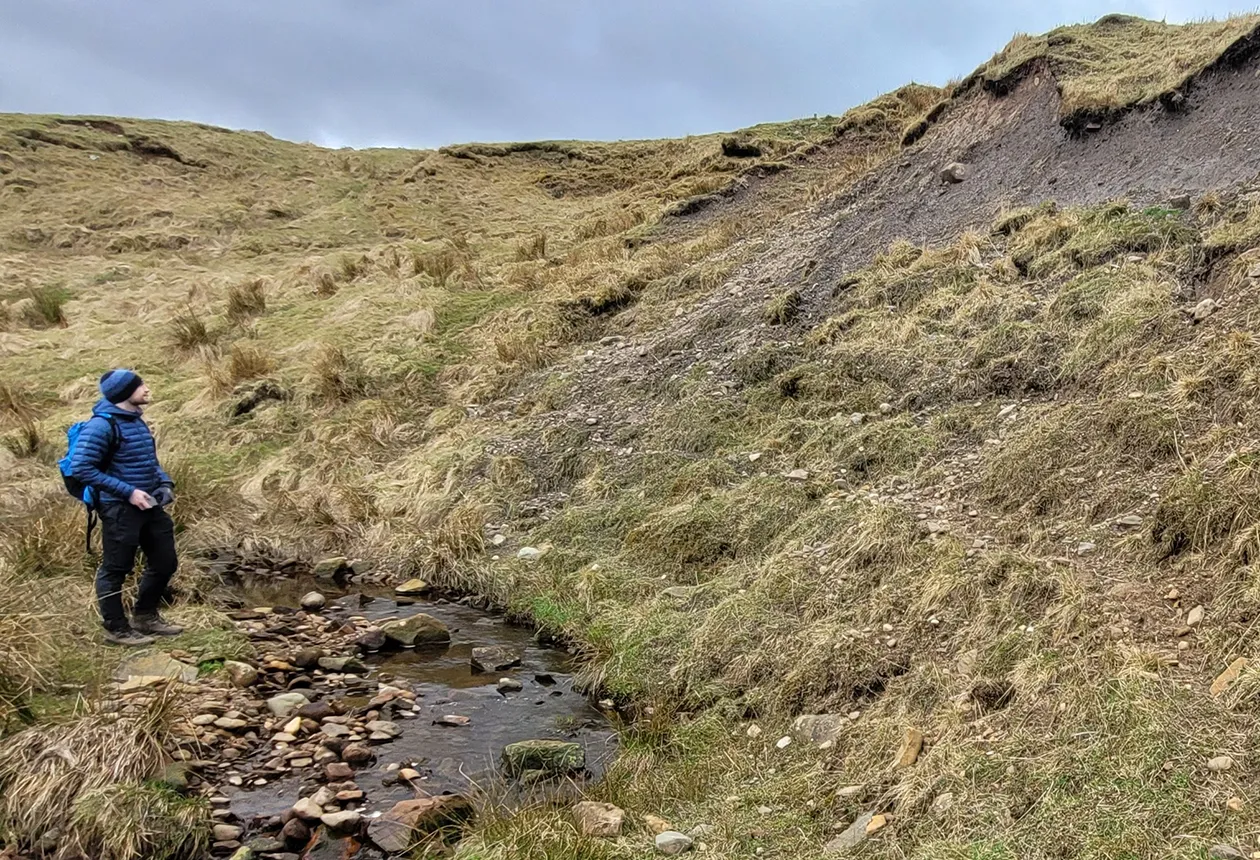
BGS Marine Geoscientist Duncan Stevens observing the glacial till exposure at the Black Burn site, Auchencorth Moss. The site shows multiple stacked till units with varying composition and structure, offering valuable insights into sediment heterogeneity, a key consideration when interpreting offshore stratigraphy and designing marine infrastructure. BGS © UKRI.
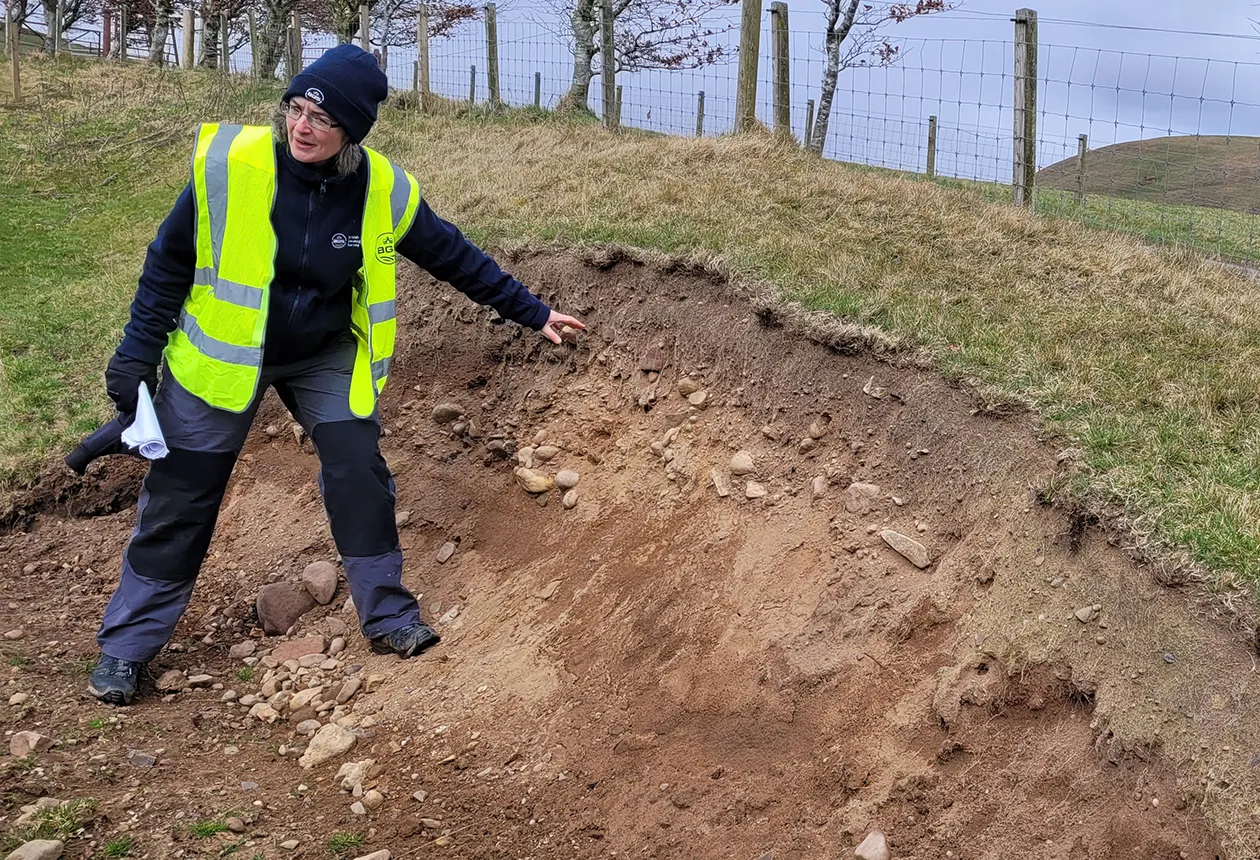
BGS Marine Geoscientist Margaret Stewart describes the till and topsoil overlying the bedrock-cut meltwater channels at Carlops, a classic example of a subglacial drainage system. BGS © UKRI.
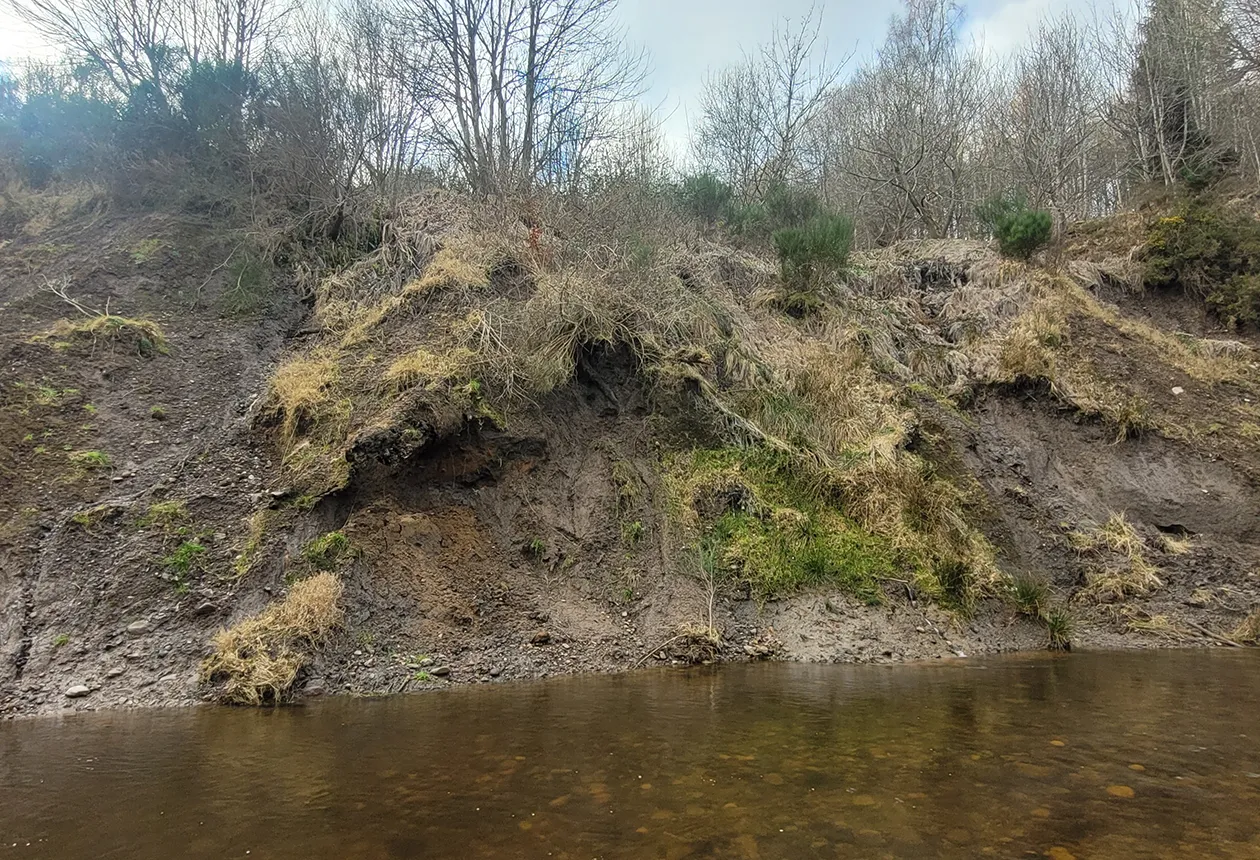
Hewan Bank, showing the basal till within the exposed glacial succession. Only the basal section is visible in the photograph; however, the wider site provides an example of stratigraphic layering used to interpret glacial history, offering valuable parallels to offshore sediment sequences. BGS © UKRI.
About the author
Related news

How the geology on our doorstep can help inform offshore infrastructure design
19/11/2025
BGS is part of a new collaboration using onshore field work to contextualise offshore data and update baseline geological models which can inform the sustainable use of marine resources.
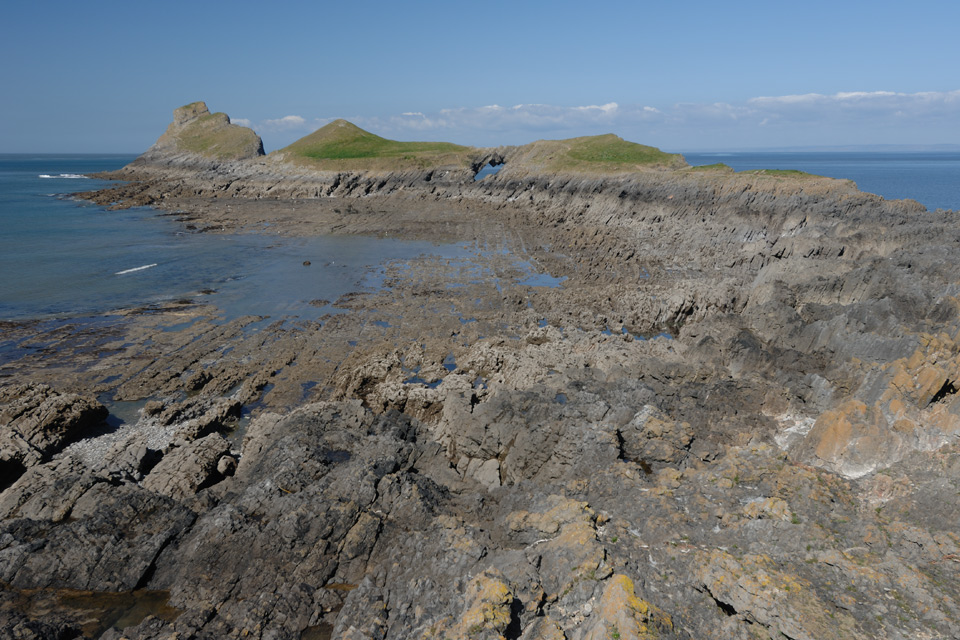
Extended seabed geology map of the Bristol Channel published
07/10/2025
BGS has released significantly extended high-resolution maps that will support offshore green-energy initiatives in the area.

Funding awarded for study on hydrogen storage potential in North Yorkshire
22/09/2025
A new study has been awarded funding to explore the potential for underground hydrogen storage near the Knapton power plant.
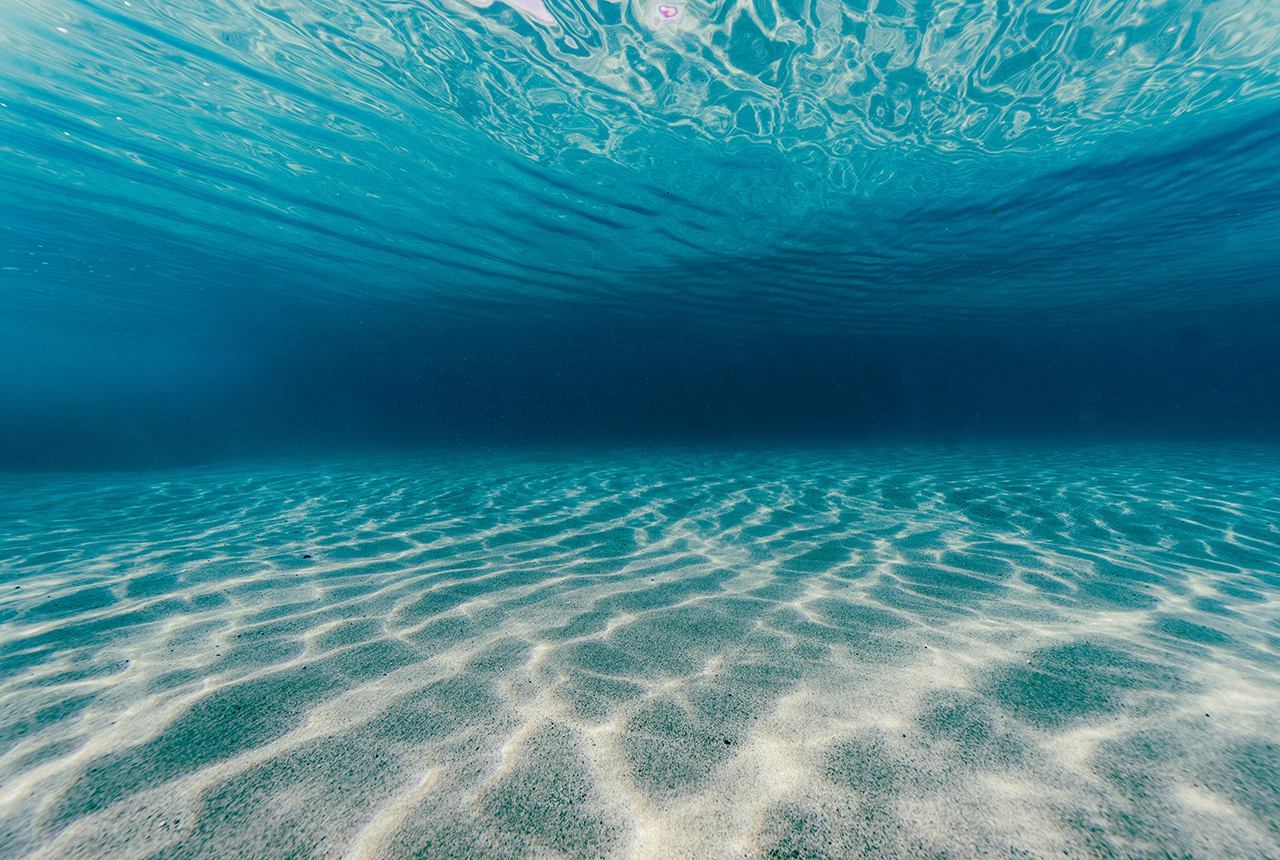
New seabed sediment maps reveal what lies beneath the waves
03/09/2025
Marine ecosystem science and offshore infrastructure will be boosted by a new dataset showing sediment composition across the UK continental shelf.
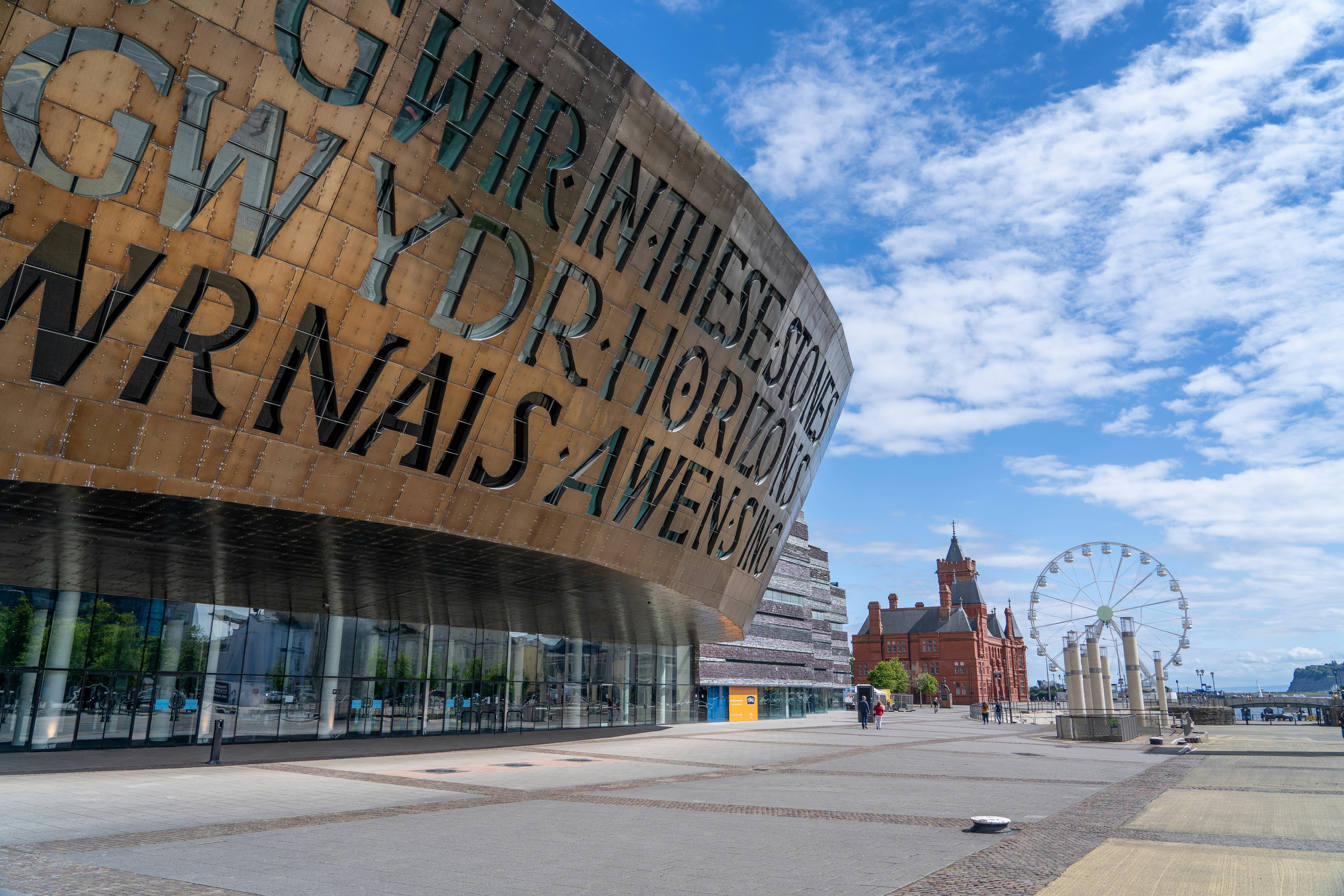
New geological ‘pathways’ discovered beneath Welsh capital
02/09/2025
Scientists have discovered cavities in the clay underneath Cardiff, which will influence the siting of future geothermal developments.
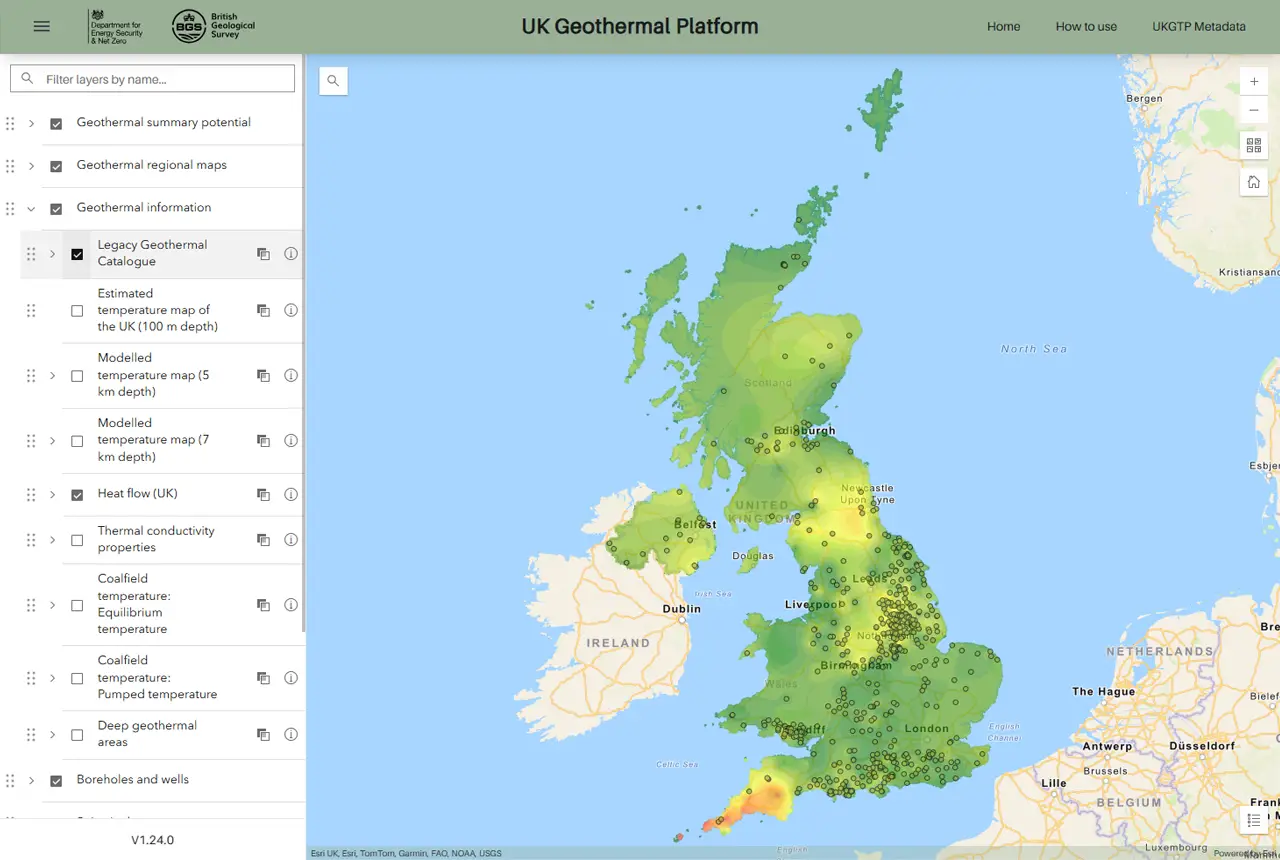
New platform highlights geothermal potential across the UK
11/08/2025
A new government-funded geothermal initiative, which includes an interactive map, has launched to help decision makers assess the geothermal potential across the UK.
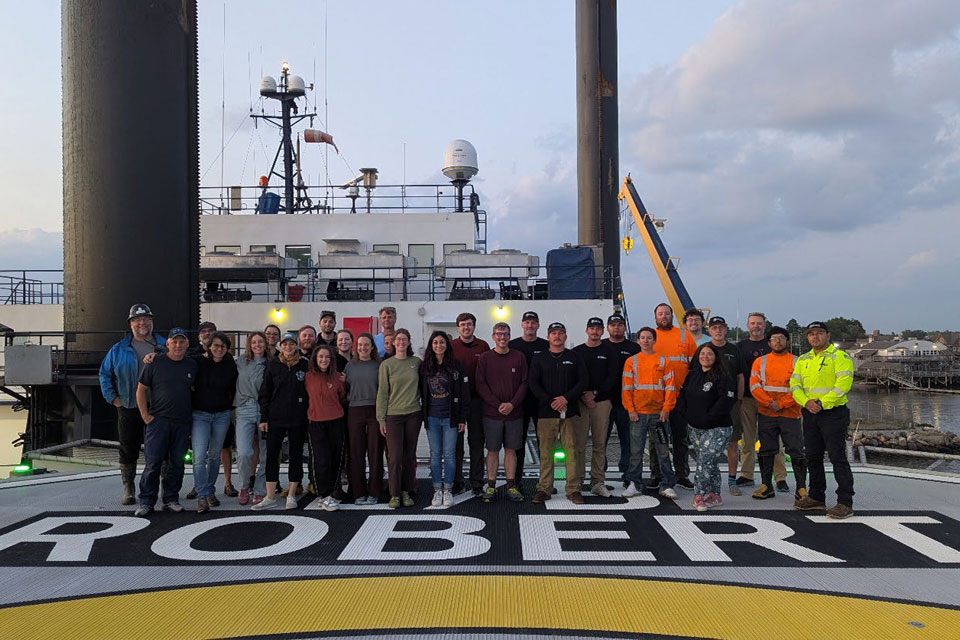
IODP³-NSF Expedition 501: successful offshore operations launches onshore phase
06/08/2025
Scientists have managed to take water and sediment samples from beneath the ocean on the New England Shelf for the first time, with the intention of understanding this offshore aquifer system.

BGS hosts India for ‘deep dive’ on carbon capture and storage
30/07/2025
Some of India’s top scientists visited BGS to explore the UK’s carbon dioxide storage research potential.

Zambia’s first critical minerals guide supports the country’s potential in global clean energy transition
18/07/2025
A new guide to Zambia’s critical minerals highlights the country’s current and potential critical mineral resources, including cobalt and lithium.

Funding awarded to UK/Canadian critical mineral research projects
08/07/2025
BGS is part of a groundbreaking science partnership aiming to improve critical minerals mining and supply chains.
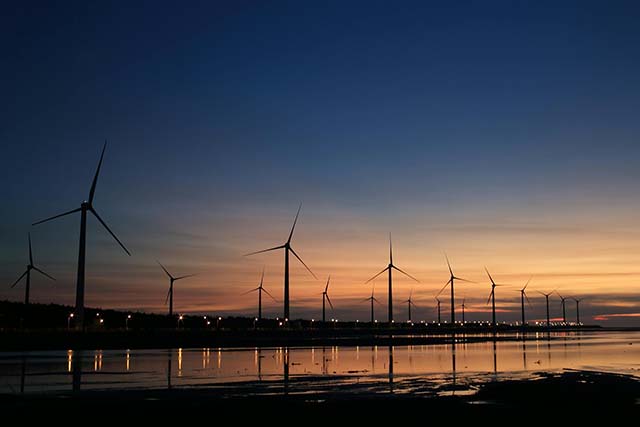
Goldilocks zones: ‘geological super regions’ set to drive annual £40 billion investment in jobs and economic growth
10/06/2025
Eight UK regions identified as ‘just right’ in terms of geological conditions to drive the country’s net zero energy ambitions.

BGS scientists join international expedition off the coast of New England
20/05/2025
Latest IODP research project investigates freshened water under the ocean floor.



